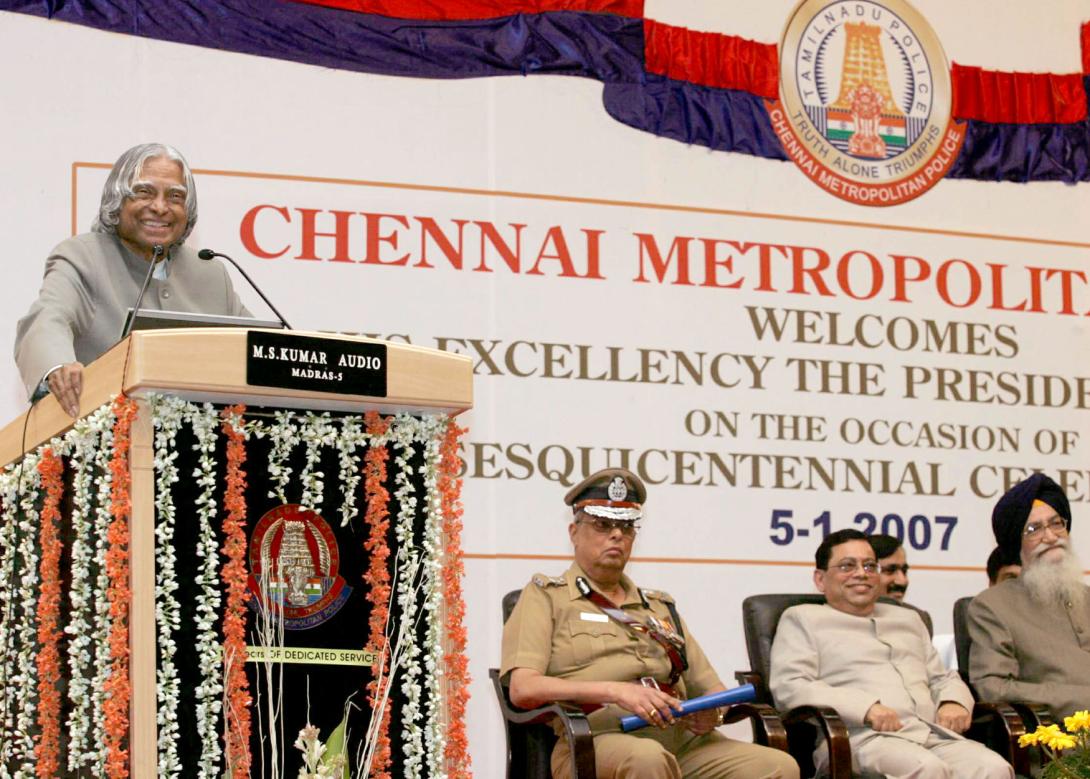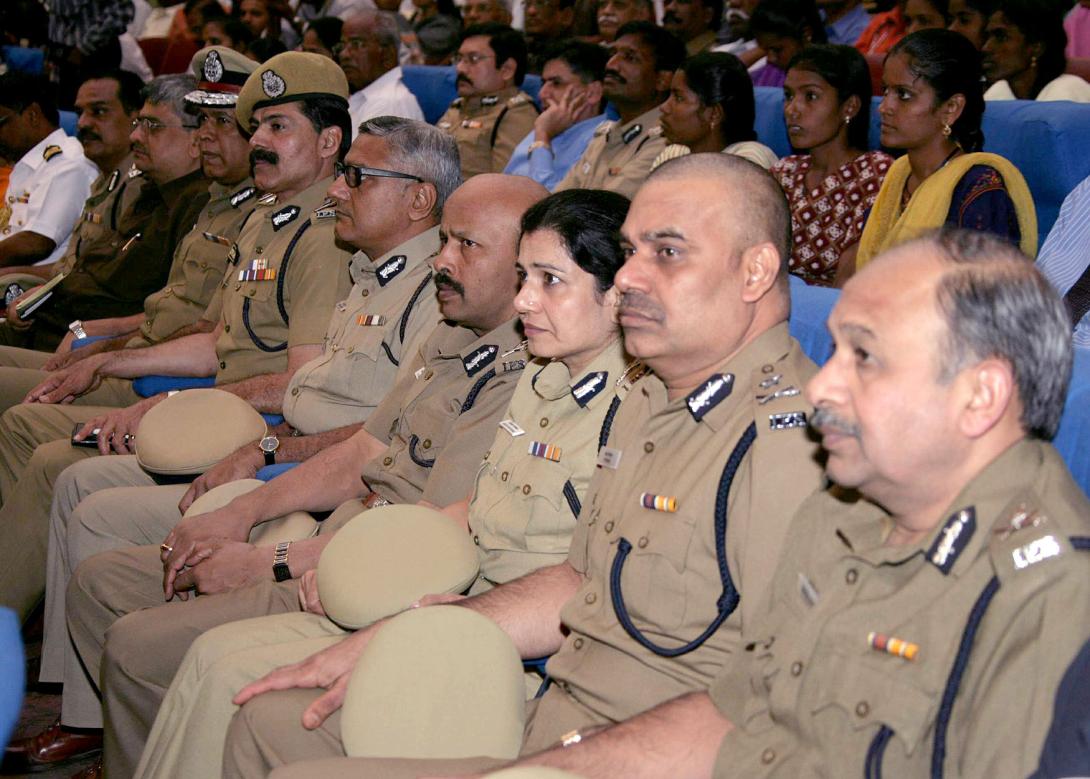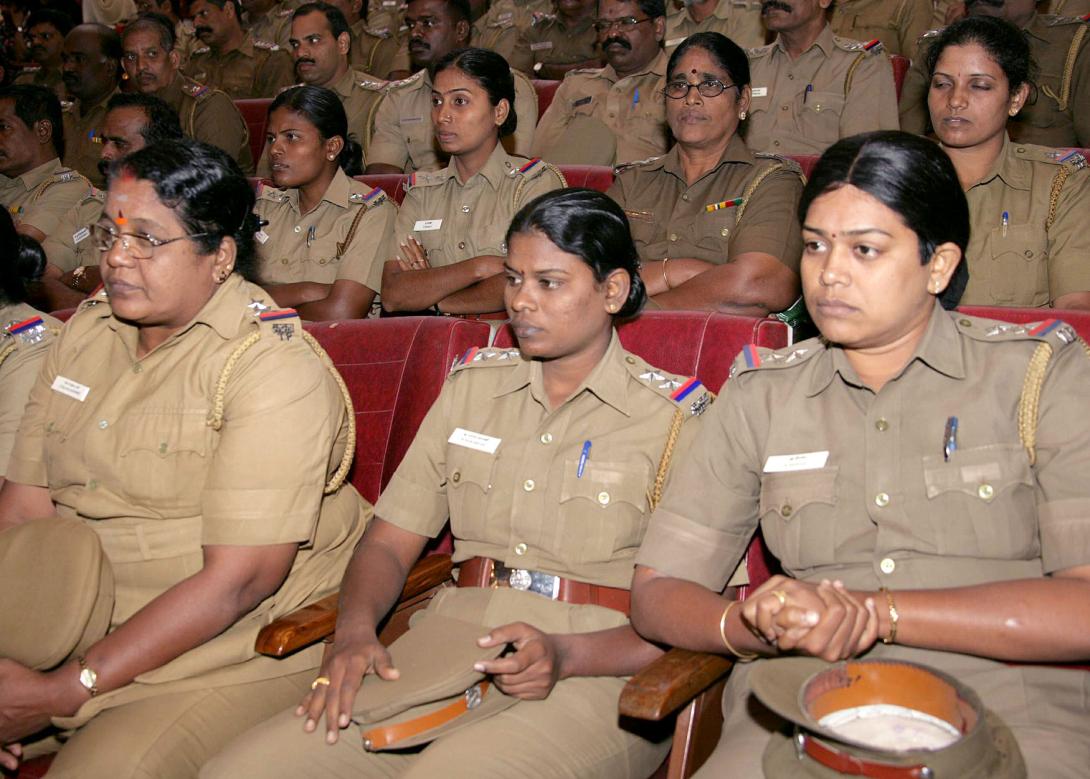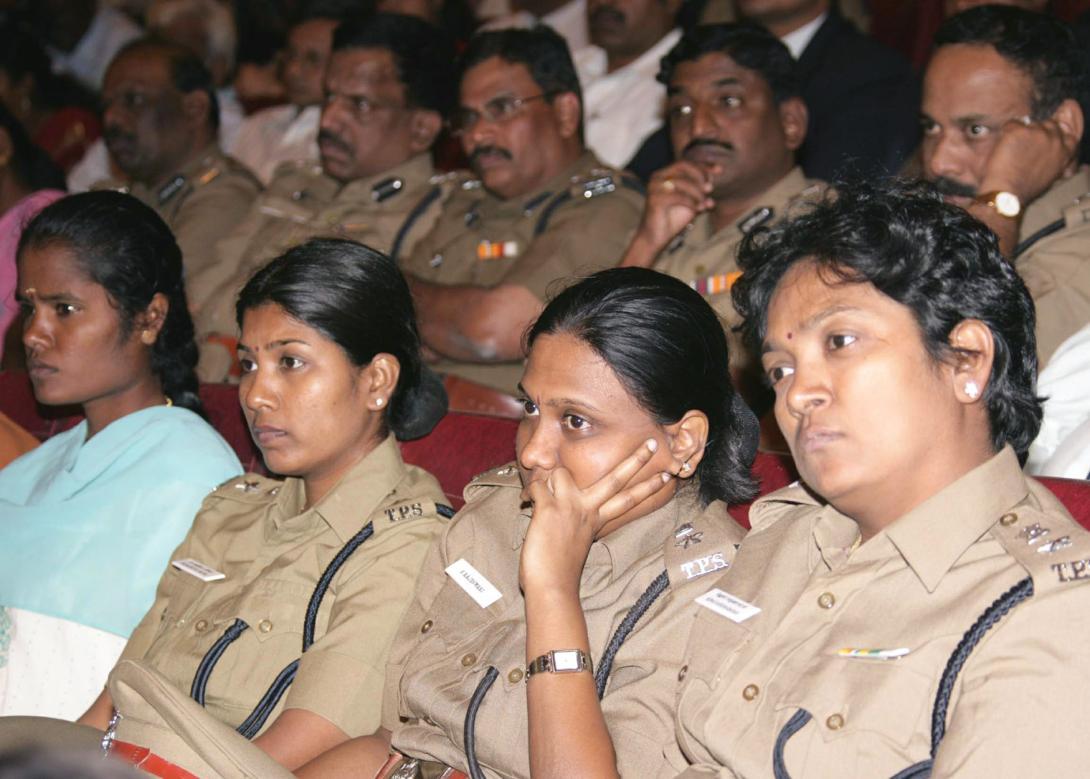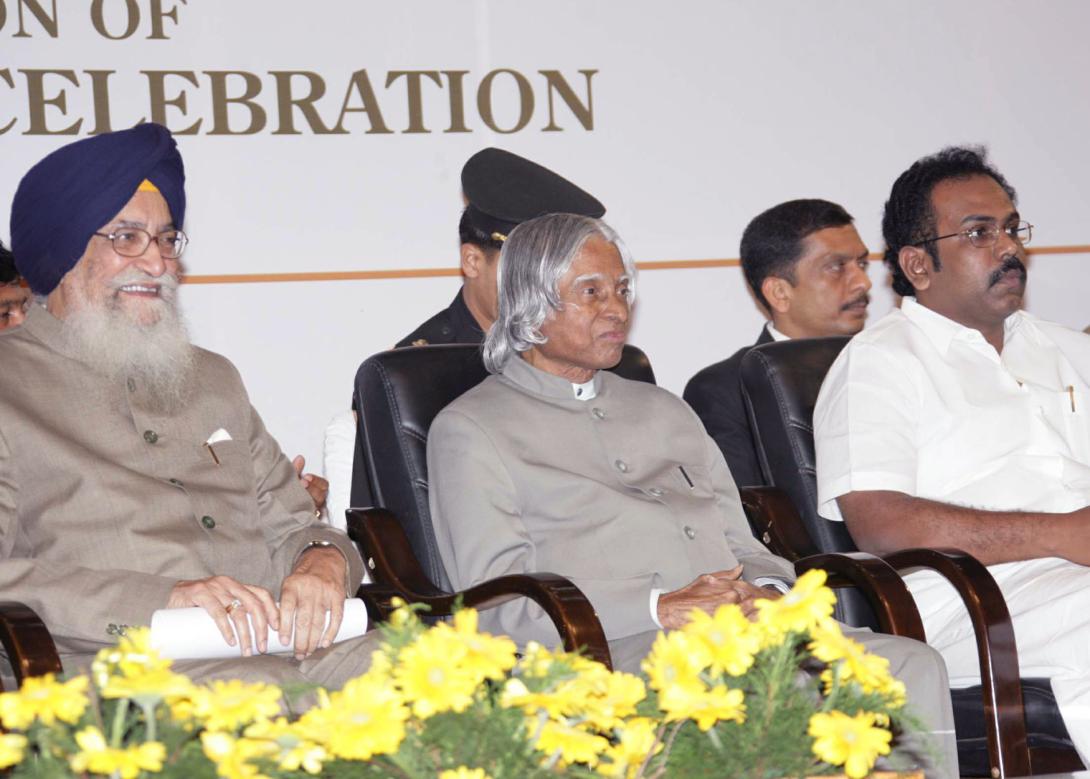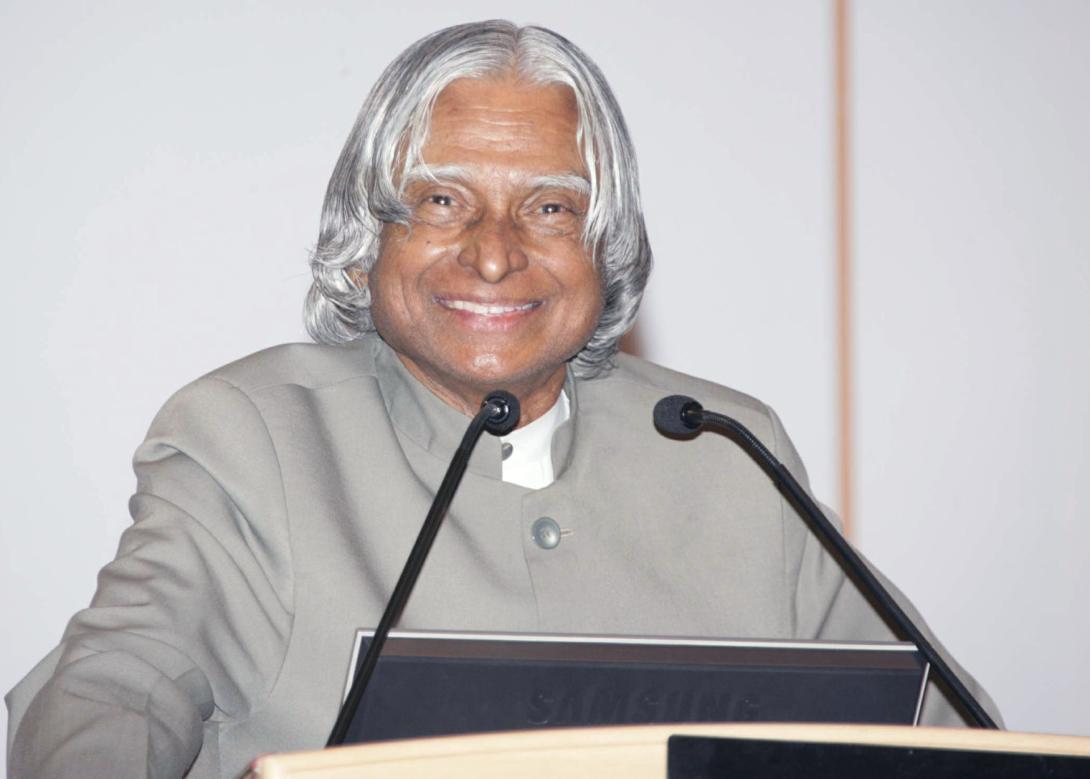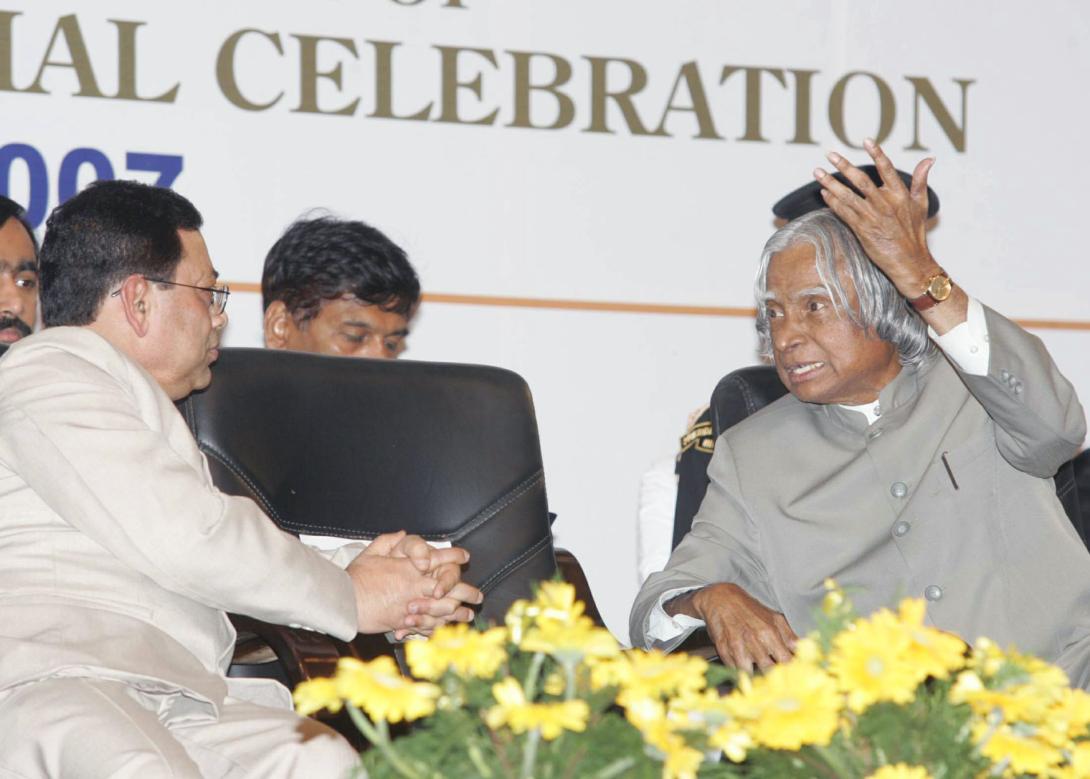Address at the 150th Year of Chennai Metropolitan Police,chennai
Chennai : 05-01-2007
Dynamics of Police System
Internal security is the foundation for
peace and development of the nation?
I am delighted to participate in the metropolitan function of the 150 years Celebrations of Chennai Metropolitan Police. My greetings to all the members of Chennai City Police, Tamil Nadu Police and distinguished invitees. I am happy to note that the strength of Chennai Metropolitan Police has increased to nearly 18000. From the crime pattern and societal needs, it is essential to increase minimum 10% in the police strength of the Chennai Metropolitan Police. I congratulate the Chennai Metropolitan Police community both present and past who have built a robust institutional framework for the policing system in the city during the last 150 years. Organizing a seminar on ?Policing in the Metropolis in the 21st Century? is definitely a pro-active step towards finding a short, medium and long term solution to the traffic congestion problem of the city and the cyber crimes arising out of recent growth in information and communication technology. In this context, let us look at the ambience of our nation in 2007 which has a direct impact on the quality of life of people.
Ambience in the Nation 2007
In the Indian history, very rarely our nation has come across a situation, all at a time, an ascending economic trajectory, continuously rising foreign exchange reserve, manageable rate of inflation, global recognition of the technological competence, energy of 540 million youth, umbilical connectivities of 20 million people of Indian origin in various parts of the planet, and the interest shown by many developed countries to invest in our engineers and scientists including setting up of new R&D centers. The distinction between the public and the private sectors and the illusory primacy of one over the other is vanishing. India, as the largest democracy in the world, has a reputation for its democracy and for providing leadership for the one billion people with multi-cultural, multi-language and multi-religious backgrounds. Giving leadership for the democratic country with billion people is indeed the core competence of the nation. And also our technological competence and value systems with Civilizational heritage are highly respected. Also, Foreign Institutional Investors find investing in India attractive. Indians are also investing abroad and opening new business ventures. The Government is also committed to economic development by ensuring growth rate of nearly 10% annually, enhancing the welfare of the farmers and workers and unleashing the creativity of the entrepreneurs, business persons, scientists, engineers and other productive forces of the society. Today there is hardly any difference between AC II tier fare and Air fare if you are in a position to book in advance. Railways have introduced super fast trains like Shatabdi express and people can book tickets through internet. Tele-density in the country has gone up to 18%. Our ICT sector is exporting nearly $ 24 billion and the Indian Pharma industry is ranked 4th in the world and exports nearly $ 4 billion of products. Our total export in the last 8 months has crossed $80 billion. As on today, we have an exclusive EDUSAT satellite for education which can connect all the remote areas in the country and provide quality education to the children. Broadband has reached up to the block level in all the Districts. Wi-max is providing last mile connectivity now. India is the fastest growing broadband economy during 2006. I visualize broadband facility to come with free bandwidth like the roads. The CARTOSAT ? the earth mapper apart from providing resource data gives input for disaster management. India has already got the capability to take better than one meter resolution imagery. This will be further complimented with the launch of CARTOSAT-II, this week. Students from abroad are keen to come to India for internship and Nanyang Technological University, Singapore has started a college in India in collaboration with Indian Institute of Science, Bangalore. People living below poverty line have come down to 22% and we are aiming at a literacy rate of 75%. Our unemployment is around 9% of the employable population of 400 million people. The Central Government has launched a comprehensive rural development programme called Bharat Nirman Programme, Jawaharlal Nehru Urban Renewal Mission and Rural Employment Guarantee Scheme with a substantive outlay for bringing the fruits of development equitably to all sections of the society irrespective of where they reside. Police indeed can be a guiding force for citizens in regulating a good way of life including executing development programme. Also, the State Governments have also launched a number of rural and infrastructure development missions towards realizing the goals of Vision 2020. In this scenario, let me visualize a scene which will be prevalent in the country in the year 2020.
Ambience in 2020
We expect the people below poverty line to come to near zero and our literacy must be nearly 100%. Human Development Index of India will be around 50. Every Indian will have either a university degree or quality training with employable vocational skill. E-governance would be in position for all G2G and G2C transactions making the governance system transparent with citizen identity card in position. Tele-density will reach over 75%. All our villages will be electrified. The interlinking of the rivers and water bodies will result in equitable distribution of water in irrigation, drinking and navigation and there will be no shortage of water. India would have realized energy security and will be working towards energy independence. Sanitary facility will reach every home. We will be using more of renewable energy such as solar energy, wind power and thorium based nuclear energy and adding less to the pollution. Through venture capital system and entrepreneurial training both in schools and colleges, we will have more enterprises leading to large number of employment generators rather than employment seekers. A pro-active healthcare system in place will provide quality healthcare to all the people of the country including those living in remote areas at an affordable cost through innovative schemes such as Yeshasvini and BR Hills scheme being practiced in Karnataka. All children will have an opportunity to take up the courses of their choice in higher education. I am sure; you will all see prosperity in the country which will replace scarcity and control.
Challenge to the police
In this changed scenario, the role of police force in general and the city police in particular has become even more emphatic and important. Our efforts to grow as an economic are hindered very often by the violence propagated by some misguided elements. Such in-equilibrium in the society may impact on our economy is becoming an area of great concern.
Our security forces generally work away from limelight. Their successes and sacrifices always go unsung while their failures make the news. I congratulate the thousands of police personnel of Chennai police who work tirelessly, like our Armed Forces guarding the border, to safeguard our polity, the economy and maintain law and order in a citizens friendly manner and make the city a pride of the State and the nation. For this occasion, I have chosen to talk on the topic ?Dynamics of Police Systems?.
Police force is a partner in national development
In the year 2020, I visualize India to be a nation where the governance uses the best of the technologies to be responsive, transparent, fully connected in a high bandwidth e-governance grid, easily accessible and simple in rules, thereby less prone to corruption. Also, it is a Nation where poverty has been totally eradicated, illiteracy removed and crimes against women are absent and the society feels unalienated. This is where there is a need to have a coherent thinking among all the members of the society, including the police force. All of us have to think that the nation is greater than an individual or an organization. All of us should believe, that "we can do it". The police force is indeed a partner in the developed India missions.
What can be the vision of our Police force?
I would like to present certain specific challenges regarding the police force. Also, I would like to present an ideal profile of Police force, which will play a pivotal role in the transformation of India to a developed nation.
Nobility of Management: Our police force needs to be a friendly, corruption free, responsible, tolerant to ambiguity and pressure, caring for the people with a sense of compassion and empathy, able to create confidence and win over the hearts of the people, be efficient and time conscious, stress tolerant, mentally and physically fit and robust, able to provide high quality leadership potential at all levels of hierarchy and be a model for conduct and discipline. High stress and heavy work are demanded everyday from Police Constables. Police stations ought to be equipped with adequate utility and operational facilities and safety in difficult areas. It is the responsibility of the senior leaders to ensure that periodic training to the police constable including foreign trainings is organized and the police stations are equipped with the operational amenities and electronic connectivity. The accountability flows from highest level of the police force to the police constable. Hence, the nobility of management has to flow from the top. This I have experienced and seen during my work with various organizations, the noble leaders radiate their way of life to all members of their teams.
Professionalism and modernization: As you are aware, during the last two decades, considerable growth and advancement has taken place in many technology areas relevant to police operations. These include Information and Communication technology, networking, transportation, riot control devices, interrogation techniques and forensic investigations. There is a need for progressive induction of Voice over IP system through Wi-max and Wi-Fi connectivities with state-of-the-art security for police communication. Also, we should have the data of habitual criminals with finger printing, DNA printing and other personal particulars like date of birth, place of birth, name of parents etc. online available to all police stations through a wide area network which is available through a centralized data centre with appropriate authentication mechanism for validation and verification without duplication of data.
The video conferencing offered has to be used in an effective way. This saves enormous amount of expenditure and the unnecessary movement of police personnel guarding under- trials and avoids unpleasant incidents that could happen during the transit. The Chennai Metropolitan Police may take the initiative of suggesting the multi-media conferencing facility from the central prisons to some of the city courts in order to ensure that time and money are not spent only for the production of under-trials before the court.
There is a need to provide adequate training to the personnel at different levels to improve the professionalism and enhance the operational efficiency of the system as a whole. This aspect must be kept in mind while augmenting the police force. It may also be useful to consider exposing our police force to the international models where modernization has already taken place. This will enable faster assimilation of the technology and further improvement, where we can do better being a late starter. The concern must be the innovative approach to the application of sophisticated technologies in the operations.
Challenges in today's communication
In the scene of terrorism, our nation's capabilities; such as communication, rail and business infrastructure become exposed and vulnerable. In this scenario, the intelligence agencies and the police have to take an integrated approach. The people, who threaten our security and our peace, often can intermix with our public and may become indistinguishable particularly in the cities like Chennai. They use very high end technologies, much the same way as any common public could use. When the attacker is distributed within the system, things become extremely difficult to detect and arrest. Innovative flow charts have to be evolved with experience to find how this phenomenon is taking place and how the intelligence agencies can match. The city police has to be graduated to the reality that crimes are not the handiwork of ordinary people but of those who are in possession of modern gadgets and good training.
Open source intelligence
One of the major revolutions of information has been the advent of the World Wide Web. It contains a vast amount of information about people, corporate and nations. In the earlier days the intelligence information used to be gathered by field officers, working directly near the source of information. But today an intelligent mining of the data coming out in many newspapers, websites and so on, can give you ample information about possible groups, their intentions and their connectivities. A regular monitoring of the internet, could give you indicators of pre-formation activities of terrorists groups and their origins and their supporters.
Cyber crimes
Economic prosperity from now to 2020 will also mean that many of the Indians will be doing business in the digital world on the web. In this new era, crime, law and justice will be completely different from the present. In the present law, for example, the jurisdiction will correspond to the location where the crime is committed and where the damage occurs ? very often both being the same location. Whereas in the digital world, the crime may originate from a strange place even outside our own shores and may damage organizational wealth which will be in the digital form in multiple locations. In the 20th century, a nation?s business transactions and wealth creation were based on transfer of materials (atoms) from one place to the other. In the 21st century wealth is created whenever information in the form of electrons is transferred across the networks in a borderless world. Our police system has to build its capacity to define jurisdictions in a way that any crime committed against India or her assets by anyone from anywhere shall be punishable by Indian law. It may be true for other countries also. The police community must enable formulation of progressive and innovative crime detection systems for the digital economy that will be one of the vital components of a developed nation. Cyber crime being technology driven, it needs unique training system for detection and prevention. I appreciate the Chennai Police has already formed a Cyber Cell. Women police personnel are the most suited for prevention of such crimes. I am happy that 35 out of 121 police stations are ?all women? police stations in Chennai, which has helped in prevention of crimes against women substantially.
What are our concerns?
Dynamics of crime: I would like to share with you some of the immediate concerns which I have been getting through the interaction with the people, e-mails, and from other sources. The women in the country generally feel that they are not safe in certain localities in certain States. In addition, there are a number of incidences of violence against women in many forms. Kidnapping, abduction and extortion have become common a serious problem in certain States. Inter-state gangs launch themselves and conduct day light robbery and mercenary action. Problem of alienation has led to terrorism and naxalism has spread to many states. Several methods are found by individuals and groups to create large scale scam and frauds in different parts of the country. Even educational institutions and medical institutions are not spared like leakage of question papers. Every election witnesses episodes of criminal attacks on candidates, booth capturing, tampering with ballot boxes and methods to disturb the democratic election process. Of course, the situation is gradually improving. No one wants to be a witness due to the sense of insecurity and lack of confidence in the system. The jurisdiction issue many times results in not filing the FIR in time and gives the opportunity to the criminal to destroy all the evidence in the interim period.
Police Station is the place of action: First of all every Station House Officer (SHO) of the police station should be instructed that he or she is bound to register the complaint immediately. Every police station should be provided with a computer for registration of complaints and e-mail address of the SHO should be published. In case nobody is registering the complaint, the complainant should have the option to send the complaint by e-mail to the concerned officer endorsing a copy of the complaint to the higher authorities whose e-mail id should also be widely published. Every complainant should get a receipt for the complaint launched with intimation to higher authorities. Procedures for registering of complaints should be widely publicized in leading newspapers and electronic media. The higher authorities should be apprised of the progress of the case by entering the status report in the police network. It must be made mandatory to all the police officers charged with filing of complaints to give an action taken report periodically within ten days to the superior officers. All police officers should abstain from pressurizing the complainant to withdraw or compromise the complaint. If such circumstances are found, the higher authorities should listen to the complainant and take action against the erring police officers.
Possible Solutions
I have been thinking some of the possible solutions which I would like to put forth for the consideration of police and other related departments for enhancing the image and the efficiency of our Police force.
Police force augmentation: While I am happy to find that Police to People ratio in Chennai stands at 1:580 as against the all India ratio of 1:938, there is definitely a need to use the technology for making the police system more efficient.
When we recruit the police personnel, we have to ensure that the quality of the person through employing suitable modern psychometric and psychological methods of personality assessment and subsequently imparting adequate training including those of developing and nurturing the qualities required for an ideal police force, which I have already mentioned.
Recruitment and Service Conditions: To attract and retain talented youth in the Police Force right from constable to officers, what we need is to design attractive service conditions with suitable pay package and perks, career planning and advancement, housing, leave, children education, healthcare facilities and self upgradation schemes. The pay package must be attractive enough to see that the police personnel at all levels will not succumb to extraneous consideration at any cost.
Training: The key to a successful police force lies in post-induction training and periodic upgradation of skills, technological skills and leadership skills at all stages of the career of the individual. The aim of the training should be to provide a cultural change among the total force through value based training, where ethical and moral values are also imparted. The organizational culture and behaviour should be made conducive to nurture and promote the values which are taught in the training institutions. The training package may include multi-level gender sensitive training to both women and men as a part of induction training to promote better understanding between men and women as a complementary force with a common objective. They should become life long learners and autonomous leaders at all levels of Police organisation. The training package should improve the psychological approach to crime prevention and rehabilitation of delinquents. The rehabilitated delinquent may perhaps become ambassadors of peace and security promoters. An interaction training programme should be conducted for the police personnel in the internet systems.
Motivation and organizational culture: The police force needs to promote an organizational culture where the concept of reward and punishment becomes the spirit of functioning of the organisation. This will be needed to sustain the motivation level of the personnel in the organisation. The physical fitness is an important pre-requisite for the smart police force. The training should ensure that the physical, mental and spiritual well-being becomes the part of the life style of police personnel. In view of the emerging stressful operations and overload, adequate rest and recuperation measures have to be planned as a part of the work schedule while deploying the police force in demanding activities.
Research input for Training
The Chennai Metropolitan Police may like to consider promotion of research in the areas of police intelligence, police administration, police management and networking. Chennai Police Stations are spread in nearly 900 Sq. Kms and are required to deal with different types of problems based on the characteristics and dynamics of the region. The Chennai Metropolitan Police can ask the individual SHOs of the 121 police stations to provide a case study relating to the special problems of the region, psychology of the police personnel, psychology of the people of the region, characteristics of the crime, technological inputs provided and connectivity between the regional police network with higher levels. These case studies should be able to bring out common approaches to crime management, and special training needs of the personnel in the region for crime detection, apprehension and control. The conduct of such case studies periodically will result in providing innovative solutions to certain problems. The case studies should govern the interface problems in such situations also. Hundred case studies in a particular year should be documented with possible solutions that should be the training package for both police officers and constables of Chennai police.
Conclusion
I would like to conclude my address by providing few suggestions for improving the traffic movement in the city which has to be made in an integrated way with the partnership of government departments, town planners, scientists, technologists, traffic system designers and the police as traffic regulators. 1. Creating a master plan for city traffic system on 3-time domains i.e. short-term, medium term and long term using a mathematical model. While working out the traffic de-congestion plan, the objective should be to reduce the peak hour commuting time to half the average time consumed at present, reducing the fuel wastage by half and improving the environment by lowering the carbon-di-oxide dumping in atmosphere. IITs and other academic institutions can be the partners in the mission.
2. For the short term, creating staggered working hours and staggered working days especially for schools, offices, factories and courts.
3. Creating intelligent traffic light systems throughout the city for ensuring fast and smooth movement of traffic.
4. Planning and executing long term infrastructure development for city traffic decongestion taking into account the growth of city population through public-private partnership as Build Operate and Transfer schemes.
5. Establishing Police Call Centre (IT based Call Centre) to provide service to the citizens of Chennai against the different types of crimes, creating awareness among the people about their rights and responsibilities and become a Citizens Help Desk. This Police Call Centre should be connected to all the city police stations for taking proactive action to prevent the crimes in the city.
6. Chennai Metropolitan Police may go all out to befriend the citizens who could report traffic violations, use of mobile phones during driving etc. Chennai Metropolitan Police can also enlist the support of NCC cadets being trained in the city schools and colleges and the scouts and guides available in Chennai for special tasks. There are 14 lakh NCC cadets 38 lakh scouts and guides spread in different parts of the country. Keeping this socially minded well trained resource in the panel, providing short term training and deploying them on special occasions will definitely make Chennai Metropolitan Police more efficient and people friendly. In this connection, I am happy to note that Chennai Metropolitan Police has initiated a programme called ?Friends of Police Movement? for mobilizing community participation in crime control, traffic management and maintaining law and order.
With these words, I greet all members of Chennai Metropolitan Police on the occasion of its 150th year Celebrations. My best wishes to the Chennai Metropolitan Police community success in their mission of providing safety, security and ease of mobility to the citizens of Chennai and improving their quality of life.
May God bless you.

